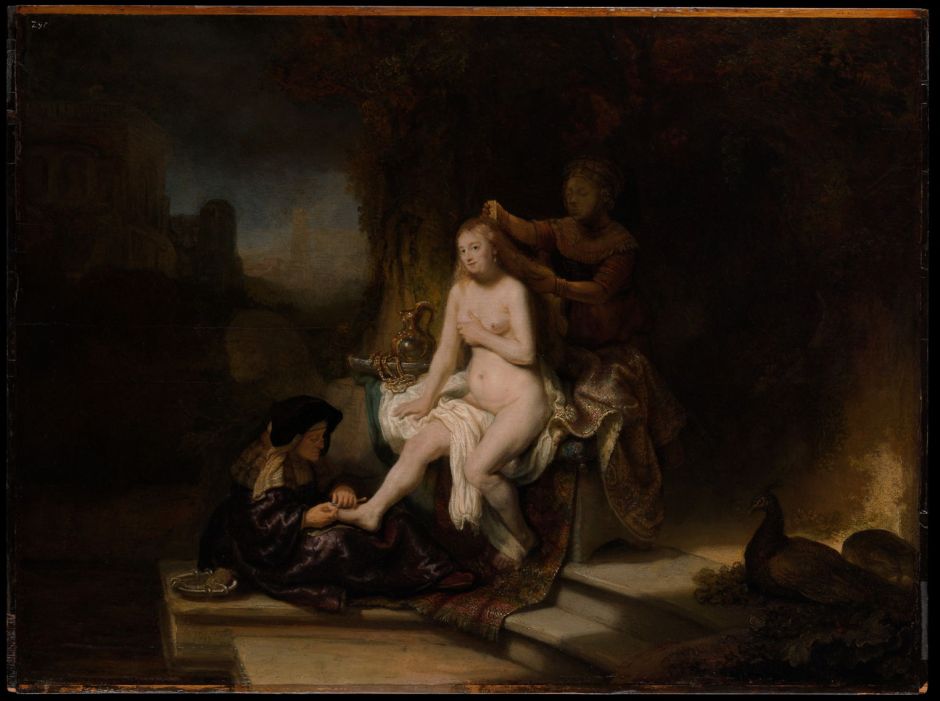Long before paintings became movable objects of great value used by the rich as investments, artists and owners of their paintings wanted to protect the paint layer that had been so carefully applied to them. From the early Middle Ages onwards, one popular means of doing this has been to apply some form of varnish.
Varnishes have been widely used not only for protection: careful choice of their composition can enhance the appearance of a painting, through the optical properties of the varnish medium and its smooth, glossy surface. Until the late nineteenth century, the great majority of painters either applied a final layer or more of varnish themselves, or advised their patrons and clients to do so.
Three main types of varnish have come into common use:
- Drying oil and resin, in effect a resin-rich transparent and unpigmented paint layer which usually becomes an integral part of it. Some artists have added pigment, perhaps to make a general colour correction, effectively making the varnish a final paint glaze.
- Solvent and resin, whose solvent will evaporate to leave a thin surface coat of resin.
- Water-based washes such as egg white, known as glair, vegetable gums like gum arabic, and animal glues.
Resins used in varnishes have rich and sometimes strange histories. Most are exudates from trees obtained from exotic locations, and have evocative names like mastic, sandarac, colophony and dammar. They’re usually highly insoluble, either in drying medium which has to be heated to make oil-based varnishes, or in turpentine or similar organic solvents. A great many recipes have been proposed, and there’s always the lure of the perfect, and inevitably top secret, formula.

The biggest problems with varnishes are their propensity to yellow or grey with age, and their tendency to take up dirt and atmospheric contaminants. Rembrandt’s first painting of Bathsheba at her Toilet from 1643 has sadly lost much of its detail into the gloom of old varnish, which can prove almost impossible to clean off when composed of drying oil and resin, without damaging the paint layer underneath.
Any work older than a few decades that has been varnished or had any form of surface treatment is unlikely to appear today with the colours the artist intended. Multiple layers of old varnish and trapped dirt give a very misleading impression of what we would have seen soon after the work was completed. Painstaking work by conservation specialists can often restore old paintings to what we presume is their former glory, in full colour again.

Hieronymus Bosch’s Christ Carrying the Cross (1490-1510) is seen above before recent conservation work, and below is the result of thousands of hours of cleaning and treatment.


Another problem for the conservation specialist is a painting like Edward Poynter’s A Visit to Aesculapius from 1880. Although this is little more than a century old, the evidence from contemporary prints made from this painting (below) is that it was originally far from being so dark. Sadly it now seems almost impossible to read as a result of its near-black shadows.


St Elizabeth of Hungary’s Great Act of Renunciation (1891) was perhaps Philip Hermogenes Calderon’s last significant painting, and by far his most controversial. It shows Saint Elizabeth of Hungary (1207-1231) prostrate before an altar, and completely naked, with two nuns and two monks behind her. At present, this painting is so dark that it is hard to see its details. The overlightened image below makes it more clear how shocking Calderon’s painting must have appeared at the time.

Varnishes, usually of the third type containing vegetable gums or animal glues, have also been used extensively on paint layers other than oils.

Unfortunately, their tendency to yellow can cause colour shifts. William Blake liked to apply glue varnish to his watercolours and perhaps to his glue tempera paintings as well. In the case of his Penance of Jane Shore in St Paul’s Church from about 1793, this has resulted in a generalised yellow shift and loss of chroma.
Varnishing has become such an accepted process that major exhibitions have incorporated ‘varnishing days’, although what happens on those occasions can be quite different. In Turner’s day at the Royal Academy in London, Varnishing Day was an occasion for artists to make any last-minute changes, and Turner himself seems to have turned up armed with paint and brushes and continued to work on his paintings then. Varnishing Day in the Paris Salon was very different, attended normally by the artists’ colourmen, who applied a coat of varnish to the paintings for which they were responsible, and the artists themselves don’t seem to have been involved.
Thankfully, Impressionism has changed attitudes towards varnish, as several of the French Impressionists and their successors explicitly told the owners of their paintings that they must never be varnished. I suspect that not all have respected those artists’ wishes.

